Tobacco History
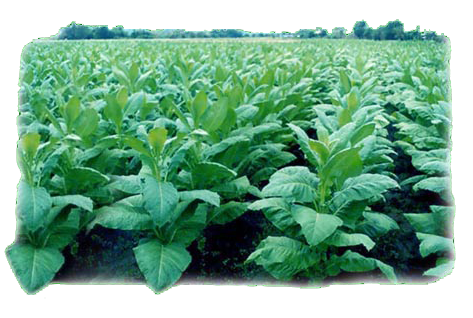 |
Finally, while it is pinpointed as cancer causing, it is considered by many as panacea for many ailments. It may yet be the plant of manifold uses as research continues to discover industrial and pharmaceutical products from the leaves as well as from its by-products.
For four decades now, tobacco continues to dominate the agricultural, economic, social and political life in the regions growing it. The tobacco industry is a major force in the development of these areas especially Region I where the flue-cured or Virginia tobacco is grown. |
Tobacco has been found by some studies to have raised the income levels and equalized income distribution in the communities growing it. Consequently, social and structural changes occured and became evident in these areas.
Tobacco Finds its Way to the Philippines
The Spanish galleons were laden with treasures and curios of all kinds from the New World, among which were tobacco seeds. Through the colonizers, the use of tobacco was introduced into most of the civilized world by the end of the 16th century. Soon, there were more people converted to smoking than to Christianity.
Meanwhile, the Spaniards experimented on the cultivation of tobacco in the places they colonized. In the Philippines, the Augustinian friars brought 6.2189 kilograms of cigar tobacco seeds in the last quarter of the 16th century. Among the major commodities in the galleon trade was tobacco.
In this plant, Spaniards saw the potential of becoming rich while gaining big income for Spain. It could also provide big revenue to the Spanish government in the Philippines. The colonizers toyed with the idea to commercialize the growing of tobacco and establish the tobacco monopoly to assure the Spanish government of bigger revenue on a sustained basis. It could also be a means of catering to the demands for tobacco by Spain and other foreign countries and thus, the establishment of the tobacco monopoly in the Philippines.
The Spaniards' attention, therefore, was divided between tobacco growing and the introduction of the Christian faith to the Filipinos.
The Tobacco Monopoly
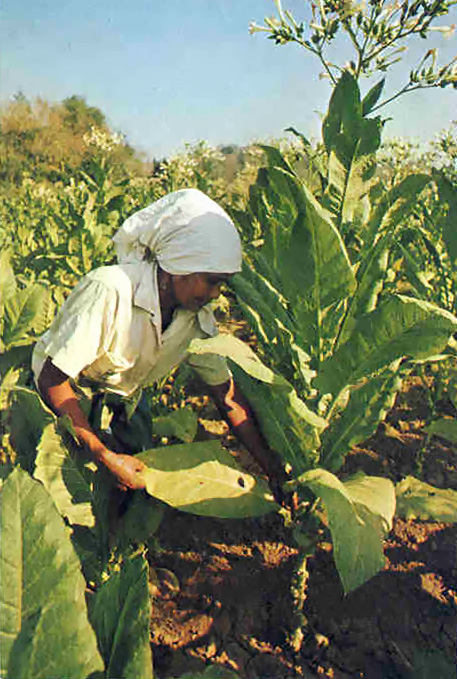 |
The Filipinos, especially those in the Ilocos Region and in Cagayan Valley, were forced to plant tobacco. Each farmer had a quota to produce. At the start, the farmer were treated fairly and got the right price for their produce. But in the end, the Filipinos abhorred tobacco not because of the difficulty in growing it but due to the abuses committed by the Spaniards as they forced the Filipinos to grow this crop. The tobacco monopoly was a source of misunderstanding even at the start. Initially, the scope of the monopoly's operations was limited to Manila and the eight central provinces of Luzon, namely, Tondo, Cavite, Bantangas, Tayabas, Laguna, Pampanga, Bataan and Bulacan. |
To soften the impact of the monopoly as a radical and burdensome measure, tobacco production was linked to the program on economic development of the country. Those who were permitted to raise tobacco were promised prompt and adequate payment for their produce.
Tobacco was grown on small plots by individual farmers instead of on a plantation wherein the government would have complete control of the operations. The government, therefore, had to negotiate with individual farmers, thus, involving hundreds of separate contracts and the need for more people to implement the activity.
A collector was contracted to collect the leaves from all the tobacco areas. In effect, these collectors served as middlemen between the government and the farmers, so the difference between what the government gave them to pay the farmers and what they actually paid the farmers was theirs. The collection of leaves was placed under direct government administration after many complaints. This gave the farmers better terms like fair treatment and the correct prices.
The monopoly heightened the exploitation of the Filipinos under the pretext of religion and obedience to the Spanish crown as it also aroused hostility among the people. Since the monopoly created many problems among the Spanish officials and the people, there were proposals to abolish it and let the Filipinos pay double tribute. There could be alternative crops to grow and the hatred toward the Spaniards could be lessened.
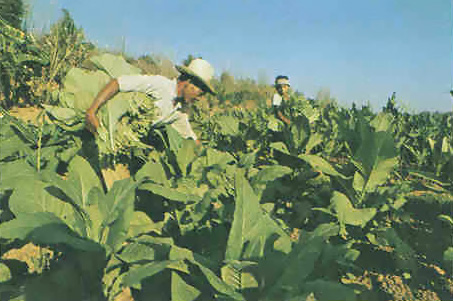 |
In the end, the monopoly did not only force the people, especially those from the north and Cagayan to grow tobacco, but compelled them to produce more then what their piece of land could yield. The collection of the produce alone turned the Filipinos into animals under the pain of 25 blows if they did not comply to transport the produce on their back. |
Tobacco smuggling, banditry and injustice in the administration of the monopoly as well as declining income led to its abolition in 1882. Being forced to raise the crop was abandoned, except those grown for home consumption by those who learned to smoke, but the knowledge in growing it remained.
Reintroduction of Tobacco
| The habit of smoking, sniffing or chewing tobacco and the knowledge to grow the crop remained with the Filipinos. It became part of their cultural heritage. Unlike in the days of the monopoly, however, the crop was grown as the people wished it.
A proof of the continued growing of the crop was the Tobacco Inspection Law enacted on February 4, 1916. This law was enacted to improve the methods of production and the quality of tobacco in the country and at the same time developed an export trade. |
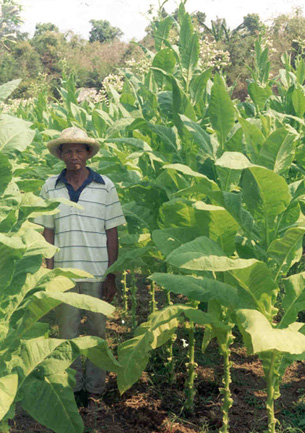 |
The then Bureau of Agriculture was instructed to purchase seeds of well-developed tobacco plants, have the seeds to pass through a cleaning machine and distribute free to the growers. It was then unlawful for any tobacco producer to cure, dry, ferment or treat the leaves in any building other than the curing shed built under specifications of the BA. The Director of Forestry was instructed to give license to any producer of tobacco to cut first class timber for the construction of curing warehouses.
Moreover, to encourage the farmers to produce the best leaves, they were awarded diplomas for excellence in tobacco production.
Inspection fees were collected and these were accumulated into the Inspection Fund, of which 30% was spent in the establishment and maintenance of tobacco experimental farms.
Tobacco Types Grown
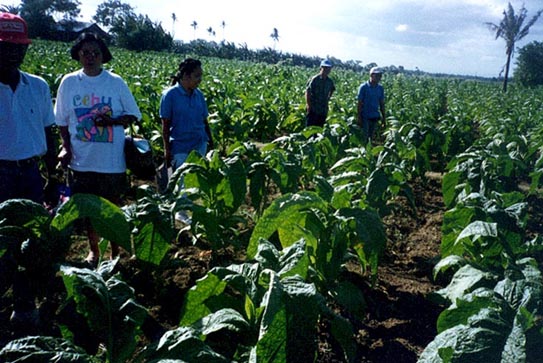 |
In 1927, the Virginia or flue-cured tobacco was test-planted at the Ilagan Agricultural Station in Isabela for adaptability to soil and climate conditions (Rabe, 1983).
In 1942, Japan sent a team to analyze the soil, climate, rainfall and weather conditions in La Union, one of the four Ilocos provinces in northwestern Luzon, for potential tobacco growing areas with the hope that the Philippines would eventually become one of its territories. |
| The team found the conditions in La Union similar to the areas planted to flue-cured tobacco in Japan. (Duldulao, 1985)
During World War II, the Japanese grew small quantities of flue-cured tobacco from seeds produced in Japan and Formosa, now Taiwan. The best flue-cured tobacco ever produced commercially in the Philippines was grown during the 1949-1950 season. Attempts to grow Burley were not yet success- ful. However, small quantities of this type and Oriental tobacco were already tried. |
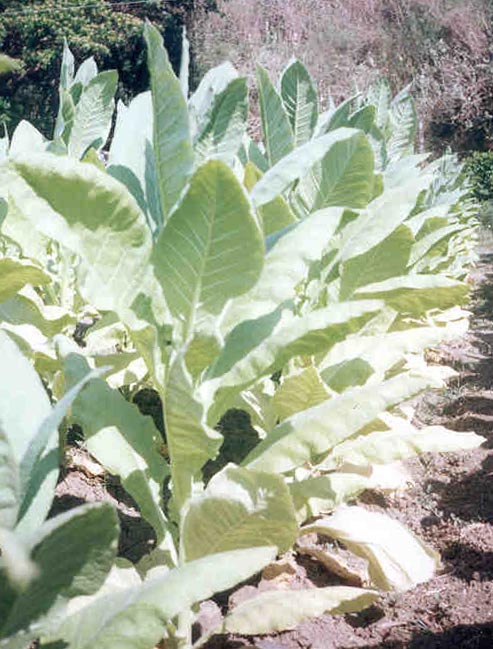 |
The Need to Grow Tobacco
| The Philippines exported 3,674,136 kg. of unmanufactured tobacco in 1950 compared to the pre-war years' (1935-1949) annual average of 16,919,169 kg. The same is true with cigar with an all time low export of 2.1 million pieces in 1950 compared with the pre-war average of 202 million pieces. Only 14,000 pieces of cigarettes were exported in 1950 compared to 37.3 million in pre-war years. The reduction in exports was attributed mainly to the closing of European markets during the war, the shift in consumer preference from cigar to cigarettes and the shortage of foreign exchange. (Food Agriculture Report, 1952). | 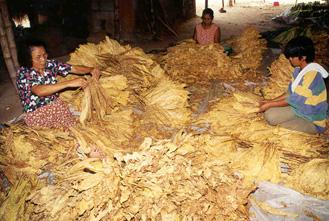 |
Before World War II, the Philippines exported unmanufactured tobacco mainly to Spain, the Netherlands, Italy, Korea and Japan. Some shipments were also made to French Africa, the United States, China, Belgium and the French East Indies. The United States, on the other hand, was the only source of blending tobacco for the country's cigarette factories.
Manila was the center of the tobacco manufacturing industry in the Philippines. In June 1951, there were 51 government-licensed cigarette factories, ten of which produced 75% of the country's machine-made cigarettes. The 25% were provided by a licensed factory in Cebu and many secretly operating factories scattered throughout the country.
The cigar products were mostly man-made but were considered of excellent quality. The chewing and smoking tobacco products were substantial while snuff tobacco was insignificant (Foreign Agriculture Report, 1952).
In 1952, Republic Act 698 was enacted to limit the importation of Virginia tobacco. This allowed all locally grown and produced Virginia tobacco to be purchased by the government. It also fixed the price for both flue-cured and sun-dried Virginia leaf tobacco. The Philippine Tobacco administration (PTA) was mandated to assist the Agricultural Credit Cooperative and Financing Administration (ACCFA) in purchasing the leaves.
Harry Stonehill, a retired United States Army Lieutenant, brought in tobacco seeds from America. He printed manuals on how to flue-cure tobacco leaves, and, together with the seeds, distributed them free to the farmers of Ilocos Sur, Abra and Ilocos Norte. He built flue-curing barns in Agoo and San Juan, La Union and in Sta. Barbara, and Jan Jacinto, Pangasinan. He established the Philippine Tobacco Flue-Curing and Redrying Corporation (PTFCRC). Together with John Witney, a tobacco expert, and Peter Lim, a businessman, Stonehill pioneered in the Virginia tobacco industry (Duldulao, 1985).




